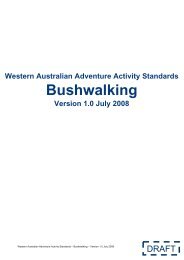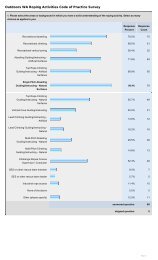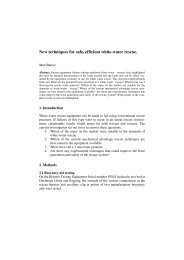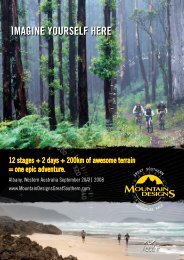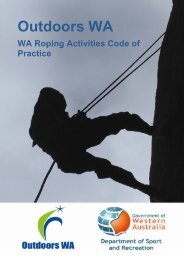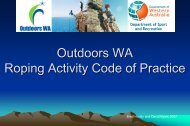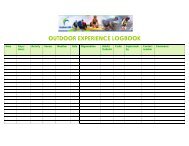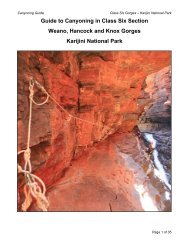Outdoor Adventure Activities Benefits Catalogue - Outdoors WA
Outdoor Adventure Activities Benefits Catalogue - Outdoors WA
Outdoor Adventure Activities Benefits Catalogue - Outdoors WA
You also want an ePaper? Increase the reach of your titles
YUMPU automatically turns print PDFs into web optimized ePapers that Google loves.
activity opportunities that are beneficial to individuals, communities, society and theenvironment,7. ConclusionThe outdoor adventure industry has moved beyond ‘testimonial support, anecdotal examplesand passionate rhetoric’ (Neill and Richards, 1998, p.1). This paper has compiled acomprehensive summary of the outcome-based research that has been generated since 1995.Inarguably, outdoor adventure activities have been shown to have a positive impact on self,others and the environment. The most effective programs seem to be longer in duration (Neilland Richards, 1998), are culturally appropriate (Purdie & Neill, 1999) and where the effectsappear to increase further over time (Brand, 2000, Gray, 1997, Neill and Richards, 1998).The benefits of outdoor adventure activities therefore, are found within and across thediversity of programs that utilise such activities (e.g. recreation, leisure and sport, education,health and therapy) in the diverse types of out-of-doors environments that they take place(everything from extreme wilderness to urban nature parks).8. ReferencesAldous, D. (2006). The benefits of green space: greening our cities and surrounds.Australasian Parks and Leisure, Summer, 6-8.American Camp Association. (2005). Directions: Youth Development Outcomes of the CampExperience. Martinsville: American Camp Association.Australian Bureau of Statistics. (2001). Year Book Australia, 2001, Cat. no. 1301.0.Retrieved 16 April 2008, from http://www.abs.gov.au/Australian Bureau of Statistics. (2008). Overweight and Obesity in Adults, Australia, 2004-05, Cat. no. 4719.0. Retrieved 16 April 2008, from http://www.abs.gov.au/Australian Sports Commission. (2007). Participation in Exercise, Recreation and Sport,Annual Report 2006. Retrieved 11 January 2007, fromhttp://www.ausport.gov.au/scorsresearch/erass2005.aspBailey, P. (2004). Rekindling the spirit of adventure – Through participation in the expeditioncomponent of the Duke of Edinburgh’s Award. The value of this challenge for theparticipant. Unpublished Ed.D., University of Wollongong, Wollongong.Ballantyne, R., & Packer, J. (2007). Learning for sustainability: The role and impact of<strong>Outdoor</strong> and Environmental Education Centres - Draft Report. Retrieved 8 April2008, from http://tourism.uq.edu.au/learning-for-sustainability/docs/Learning-for-Sustainability-Draft-Final-Report-Sep-07.pdf.Beeton, S. (2006). Regional Communities and Cycling: The case of the Murray to theMountains Rail Trail, Victoria, Australia. Retrieved 28 February 2008, fromhttp://www.latrobe.edu.au/tourism/assets/downloads/research/rail-trails.pdf.Black Dog Institute. (2007). Facts & figures about mental health and mood disorders[Electronic Version]. Retrieved 16 April 2008 fromhttp://www.blackdoginstitute.org.au.Booth, M. L., Okely, A. D., Chey, T., Bauman, A., & Macaskill, P. (2002). Epidemiology ofphysical activity participation among New South Wales school students. Australianand New Zealand Journal of Public Health, 26(4), 371-374.Page 26







